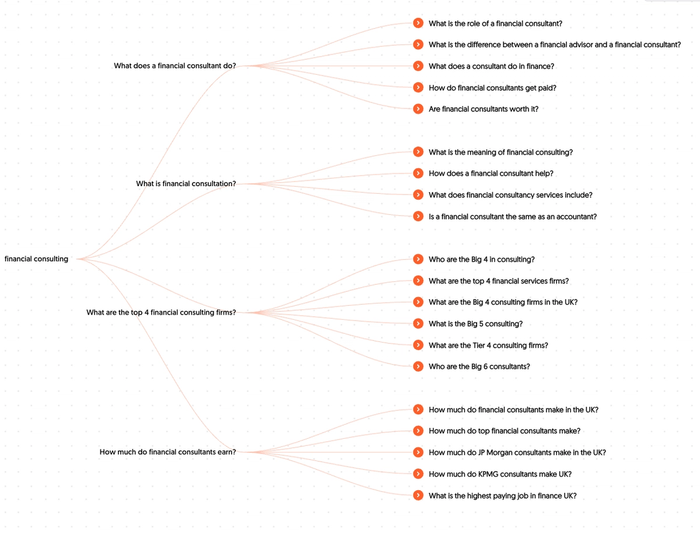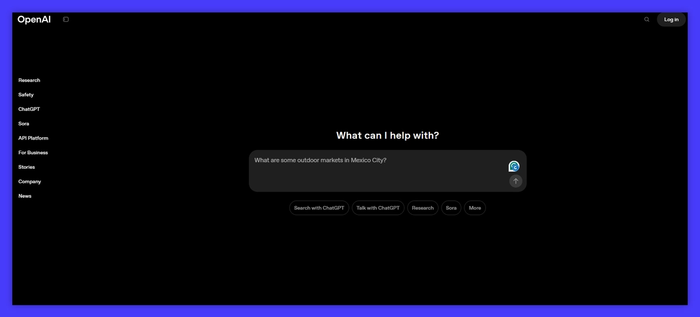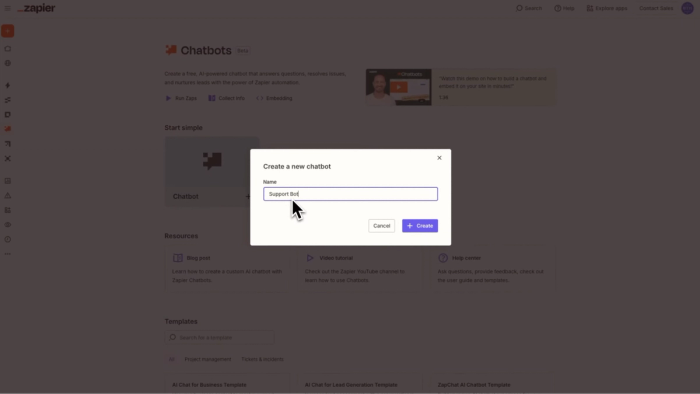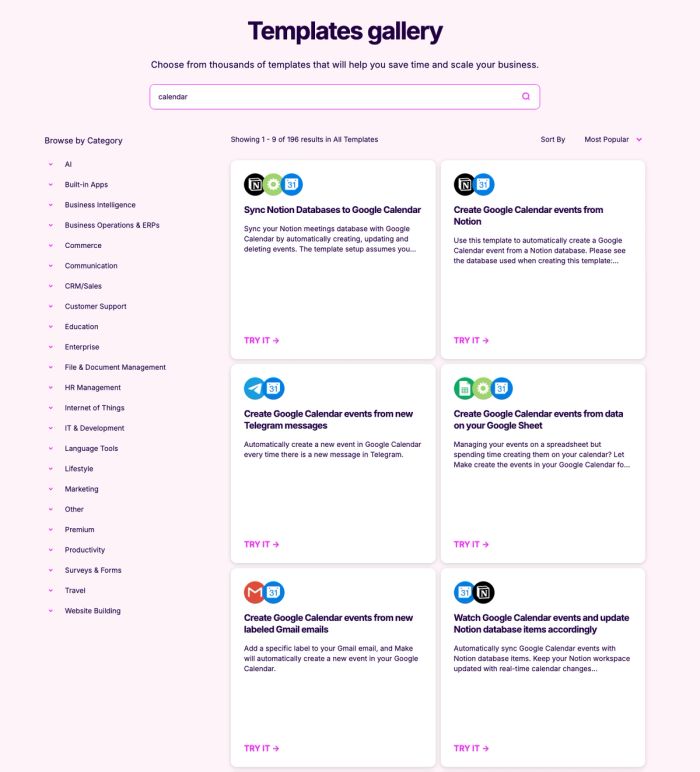You’ve probably heard of ChatGPT, Gemini, or Copilot — but might not realize they all fall under the umbrella of generative AI. These tools are no longer just for tech giants. Today, small businesses are using them to save time and streamline processes.
In this guide, we’ll walk through practical ways you can apply generative AI in your day-to-day work, from content creation and marketing to admin and customer service.
What is generative AI?
Generative AI is a type of technology that creates content, like text, images, or code, based on your prompts. Tools like ChatGPT, Gemini and Perplexity respond to questions, generate drafts, summarize information, and more.
Most of these tools are easy to access.
You enter a request like: Write a friendly email to my customers about a summer sale.
And within seconds, the system returns a complete draft.
Many of these tools are free or low-cost, making them accessible even for very small teams. For example:
- ChatGPT (OpenAI) – Free tier with GPT-3.5; $20/month for GPT-4 access.
- Gemini (Google) – Free via your Google account; advanced features available through Google One AI Premium ($19.99/month).
- Perplexity – Free basic access; Pro plan at $20/month unlocks more advanced models.
- Claude (Anthropic) – Free for casual use; Pro plan with Claude 3 Opus is $20/month.
- Copy.ai – Free plan includes limited credits; paid plans start at $49/month with more templates and team features.
These pricing tiers are built for experimentation. You can test the basics, then scale only if you see real value.
Generative AI use cases for small firms
If you're running lean and doing most of the heavy lifting yourself, generative AI can step in to help. Below are practical ways small businesses can use these tools, with prompts and examples to get you started.
Use case 1: Content creation & copywriting
67% of small businesses used generative AI for content and SEO in 2024, according to Semrush. So if you’ve been thinking about trying it, you’re not alone – and you don’t need a writing background to see results.
AI tools like ChatGPT and Jasper can help you generate blog posts, client emails, landing page copy, proposals… anything that starts with a blank page and takes longer than it should.
Real-world example
You run a small financial consulting firm that works with other small businesses. You’d like to publish content that draws in potential clients, but what exactly should you write about?
You check AnswerThePublic and search for “financial consulting.”

The results surface real questions people are searching for, like:
- What does a financial consultant do?
- Are financial consultants worth it?
- How does a financial consultant help?
These give you a clear starting point. You decide to write a blog post titled: 5 ways a financial consultant can help small businesses grow.

To draft it, you open ChatGPT and enter a prompt like:
Write a blog post for a small financial consulting firm. The topic is “5 ways a financial consultant can help small businesses grow.” Keep the tone professional and supportive. Include a short intro, then a numbered list with clear, practical examples. End with a quick summary and a soft call to action.
In seconds, you get a structured draft. The core ideas are there — now it’s just a matter of refining the language and adding your own insights to make it sound like you.
How to write a better prompt
AI tools can only work with what you give them. You’ll get better drafts if you include a few details in your prompt, like:
- The type of content you’re creating (blog post, email, proposal)
- Who the audience is (new client, returning customer, warm lead)
- The tone you want (professional, friendly, warm, confident)
- The length or format (short paragraph, numbered list, etc.)
- What action do you want the reader to take (book a call, reply, sign up)
Instead of using a basic prompt like:
Write a welcome email for a new client.
Try powering it up like this:
Write a short, professional welcome email to a new client from a small consulting firm. Keep the tone warm and confident. Mention what’s next in the onboarding process and include a contact point for questions.
A few small additions go a long way. You’ll get content that feels more aligned, and you’ll spend less time editing.
Think of generative AI as your drafting assistant. It speeds up your process, but the human touch still matters. Use it to get going faster, not to do the thinking for you.
Use case 2: Personalized outreach at scale
Generic messages don’t convert. But writing tailored emails for each group in your CRM takes time — unless you combine AI with simple audience segmentation.
Let’s say you’ve tagged two groups:
- Leads who downloaded a free business guide but haven’t booked a call
- Clients who haven’t re-engaged in a while
Instead of writing from scratch, use an AI tool to quickly generate a first draft for each one.
How to start, step by step
- Pick one audience tag (e.g. Downloaded lead magnet)
- Define the goal of your message (e.g. Encourage them to book a call
- Write a clear, single-purpose prompt, like:
Write a follow-up email for a lead who downloaded a business guide but hasn’t booked a call. The tone should be helpful and professional. Include a soft CTA to reconnect.
- Edit the output to reflect your voice and value — AI gets you 80% there
- Send it — and save it as a reusable template for similar leads
What better personalization actually sounds like
Before (generic):
Thanks for checking out our resources. Let us know if you need help.
After (AI-personalized):
Noticed you downloaded our guide last week. If any of those roadblocks sound familiar, we’d be happy to talk through a few options. Here's a link to book a quick chat — no pressure.
More specific, more human, and much more likely to drive action.
! Keep it privacy-safe
Don’t paste customer names, emails, or specific identifiers into AI tools, especially if you’re using free or public versions. Most of these tools log inputs to train their systems, which means anything you enter might be stored or reviewed later. That’s not something your customers would expect, and it could create compliance risks under GDPR.
Stick to broad traits instead. Say:
✅ Clients who haven’t renewed in a few months
❌ Olivia Clarke from Bristol Clarke Digital, who opened our email on May 12
This helps you generate relevant, on-brand content while protecting customer trust.
If you ever want to go deeper with AI and customer insights, look into tools that support private environments or business-level data handling. But for everyday use, general audience signals are more than enough, and much safer.
Use case 3: Internal & external chatbots
If you’re running a small business, customer questions don’t come in batches. They interrupt your day — in your inbox, on Facebook, through your website, sometimes all at once.
And it’s often the same five questions:
- When will my order arrive?
- How do I make a return?
- Are you open on weekends?
You could keep answering manually, or spend your Saturday updating your FAQ page. But there’s a quicker way.
Chatbot tools like Zapier’s Chatbots let you build a basic, on-brand assistant that responds automatically, with answers you write once, then reuse across your channels.

Set it up in under an hour
- Jot down the top 5–10 questions customers ask you most. Think shipping, opening hours, pricing, or anything you’ve typed more than three times this week.
- Write simple, helpful answers — in your tone. Use the same voice you would in a quick reply. Friendly and to the point.
- Drop them into a chatbot builder. Tools like Zapier let you add these directly, or even pull from existing help docs. Most offer step-by-step setup.
- Test it like a customer would. Ask questions in plain language. If the answer isn’t clear, tweak the wording.
- Make sure handoffs work. Add a message like “Need more help? We’ll jump in” to guide complex questions back to you or your team.
It’s not just for customers!
Customer support is the obvious use case, but you can also use a chatbot internally. Need to onboard new hires? Share how-tos for common tools? Centralize business policies?
Chatbots can also help inside your business. If your team is growing, you’ve probably answered things like:
- Where do I find the invoice template?
- What’s our refund policy again?
- Who approves social posts?
Instead of repeating the same links or explanations, you can train a simple internal chatbot to answer these for you, using the same tools.
Use case 4: data analysis
When you're dealing with many customers, projects, and admin, digging through spreadsheets or reports rarely takes time you don’t have. But those files often hold insights you’re probably missing.
Generative AI can help. Instead of sorting data by hand or squinting at a dashboard, you can ask a plain-language question and get a summary you can act on.
Below are three small ways to start.
1. See where your time really goes
You run a service-based business and track hours in a spreadsheet. You know some projects run long, but you're not sure where the bottlenecks are.
You upload the time log and ask:
Which project types took the most hours last quarter? Were those projects also the highest rated by clients?
In seconds, the AI highlights where your time is going and whether it’s worth it. You might find small-brand identity projects are profitable and fast, while full rebrands are time-heavy but low-margin.
That’s input you can use to adjust your offer, pricing, or team focus.
2. Find what’s driving repeat business
You’ve been logging customer feedback and invoices, but haven’t reviewed them together.
You copy a CSV file into the AI tool and ask:
Which types of customers placed multiple orders this year? What feedback did they leave compared to one-time buyers?
The tool clusters patterns you hadn’t noticed. Maybe clients who order workshops also mention speed and flexibility, while one-off buyers comment on price.
3. Spot weak points in your sales flow
Your CRM exports deal activity: stages, close dates, lost reasons, and values. You’re not sure where most deals fall apart.
You can ask:
Where do deals most commonly get stuck? Are there specific lead sources tied to longer sales cycles or lower win rates?
Within moments, you see that leads from a partner network close fast, but paid ads bring volume with low conversion. Now you know what to invest in, and what to pause.
⚠️ Keep it compliant at all times
We mentioned this earlier, but it’s worth repeating: before uploading any files to an AI tool, double-check that they don’t contain personal data like:
- customer names,
- email addresses,
- or internal notes tied to individuals.
Stick to anonymized or aggregated information, for example, use labels like “Client A”, “Service B”, or “Repeat buyer”.
Most free AI tools don’t meet GDPR standards for handling personal data. If you’re working with live CRM exports or detailed customer histories, use platforms that offer built-in privacy controls or business-grade environments.
Your data is valuable — but so is your trust.
Use case 5: Build branded visuals faster
Design delays can stall your marketing. You need visuals for LinkedIn posts, downloadable guides, or email headers — but hiring a designer or finding the right image often takes more time (and money) than you have.
With generative AI tools like ChatGPT’s built-in image generator, you can create clean, campaign-ready visuals by describing what you need in plain language. It’s fast, flexible, and free to try.
Real-world example
You’re a business consultant preparing a LinkedIn series about helping small teams scale. You’ve got the message and structure, but no visuals — and no budget for a designer.
In ChatGPT, you prompt:
Create a clean, modern illustration showing a small business team collaborating around a table. Neutral background, soft colors, room for text overlay.

You get a few options. One fits your tone and layout. You download it and move it into Canva to add your title and brand colors — now it feels like yours:

The results give your materials a consistent, professional look, without outsourcing. What might have cost $200+ across a few assets now takes under an hour.
Keep copyright and consistency in mind
ChatGPT’s image outputs can be used commercially, but always check current terms if you're publishing widely. And while AI can generate strong visuals quickly, it won’t give you a complete brand system. Expect to fine-tune colors, fonts, or layouts to keep things consistent. Use AI to accelerate the work, but keep creative direction in your hands.
Use case 6: Automate repetitive admin tasks
Small business owners are stretched thin. More than 70% work over 40 hours per week, and nearly one in five log over 60. That time is often lost to repetitive admin: forwarding leads, logging data, rewriting the same email.
But you don’t need to be a tech expert to lighten the load.
With tools like Make.com, you can automate everyday tasks using ready-made templates. Just connect the apps you already use — like Gmail, Google Sheets, Slack, or Calendar — and let the system take care of the busywork.

Small businesses using automation report up to 40% higher productivity and 30% lower operating costs, mostly by cutting out repetitive work and routine admin.
Here are four automations small teams can put to work right away:
Log new client emails in a spreadsheet — instantly
Leads and client requests often arrive by email. Instead of forwarding them or manually copying details into a CRM or tracker, this automation captures each email’s sender, subject, and message and adds it to your Google Sheet — no touch required.
🔗 Try it: Add new incoming emails to a Google Sheets spreadsheet
Auto-send emails when new leads come in
You add a new lead to your Google Sheet — or someone fills out a form — and this workflow sends a Gmail reply instantly. You stay responsive without having to be in your inbox all day. Whether it’s a thank-you message, meeting link, or intro to your service, it gets sent while you’re doing something else.
🔗 Try it: Send Gmail email from a new Google Sheets row
Add booked meetings to your calendar automatically
You’re tracking calls or bookings in a spreadsheet, but still adding them manually to your calendar. This automation picks up the date and time from your sheet and creates a Google Calendar event for each one.
🔗 Try it: Sync events to Google Calendar
Push Facebook leads straight into your follow-up sheet
If you’re running Facebook Lead Ads, this automation takes every new lead and adds it straight to your Google Sheet in real time, so your team can jump on them fast.
🔗 Try it: Sync Facebook Lead Ads leads with Google Sheets
You don’t have to automate your entire business, but removing just a few of these manual steps adds up to hours saved each week.
Use case 7: Build small tools for your website
Even just a year ago, building something like an interactive ROI calculator for your blog would’ve meant hiring a developer or buying a clunky plugin.
Now? Generative AI can build it for you.
You can simply describe what you need — for example, build an ROI calculator:

In seconds, the AI generates fully functional code. You copy and paste it into your site or CMS, and you’re done!

(If you want to use this calculator, you can access it here)
Want to go further? You can prompt AI to build:
- Pricing tables that adjust based on user input
- Feature comparison tables for your product or service plans
- Interactive checklists or comparison widgets for blog posts
And more — without writing a single line of code. Just describe what you want to build, and with a few quick edits, it’s ready to use.
Generative AI for business like yours
Generative AI is already part of everyday work. More small businesses are using it to speed things up and stay on top of day-to-day tasks. You don’t need technical experience to start. Most tools are built to be simple. Good luck!




